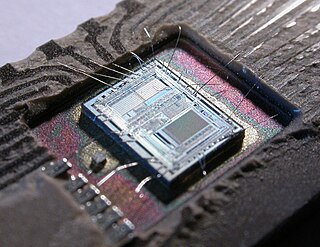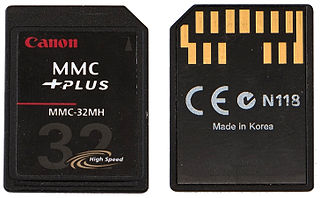 | |
| Company type | Private |
|---|---|
| Industry | Electronics, Technology |
| Founded | 1991 |
| Headquarters | , |
| Products | Device programmers |
| Website | www |
Elnec is a Slovak manufacturer of device programming systems for programmable integrated circuits. [1]
 | |
| Company type | Private |
|---|---|
| Industry | Electronics, Technology |
| Founded | 1991 |
| Headquarters | , |
| Products | Device programmers |
| Website | www |
Elnec is a Slovak manufacturer of device programming systems for programmable integrated circuits. [1]
Since its founding in 1991, the company has been oriented towards developing and manufacturing developer tools like device programmers, emulators, simulators and logic analyzers. [2]
Core business of the company today is only the development and manufacture of equipment that transfers data into various non-volatile semiconductor devices. These devices can be sorted into three categories: microcontrollers, flash memory, and programmable logic devices.
Most of Elnec device programmers can be referred as universal [3] [4] due to support of many programmable devices from different semiconductor companies as Microchip, STMicroelectronics, EM microelectronics, etc.
Elnec’s products are sold also under ODM names as B&K Precision, Dataman [5] or Minato.
One of company's competitors is Data I/O.
Elnec production can be divided into groups:

An integrated circuit (IC), also known as a microchip or simply chip, is a small electronic device made up of multiple interconnected electronic components such as transistors, resistors, and capacitors. These components are etched onto a small piece of semiconductor material, usually silicon. Integrated circuits are used in a wide range of electronic devices, including computers, smartphones, and televisions, to perform various functions such as processing and storing information. They have greatly impacted the field of electronics by enabling device miniaturization and enhanced functionality.

A microcontroller or microcontroller unit (MCU) is a small computer on a single integrated circuit. A microcontroller contains one or more CPUs along with memory and programmable input/output peripherals. Program memory in the form of NOR flash, OTP ROM, or ferroelectric RAM is also often included on the chip, as well as a small amount of RAM. Microcontrollers are designed for embedded applications, in contrast to the microprocessors used in personal computers or other general-purpose applications consisting of various discrete chips.

A programmable logic device (PLD) is an electronic component used to build reconfigurable digital circuits. Unlike digital logic constructed using discrete logic gates with fixed functions, the function of a PLD is undefined at the time of manufacture. Before the PLD can be used in a circuit it must be programmed to implement the desired function. Compared to fixed logic devices, programmable logic devices simplify the design of complex logic and may offer superior performance. Unlike for microprocessors, programming a PLD changes the connections made between the gates in the device.

An EPROM, or erasable programmable read-only memory, is a type of programmable read-only memory (PROM) chip that retains its data when its power supply is switched off. Computer memory that can retrieve stored data after a power supply has been turned off and back on is called non-volatile. It is an array of floating-gate transistors individually programmed by an electronic device that supplies higher voltages than those normally used in digital circuits. Once programmed, an EPROM can be erased by exposing it to strong ultraviolet (UV) light source. EPROMs are easily recognizable by the transparent fused quartz window on the top of the package, through which the silicon chip is visible, and which permits exposure to ultraviolet light during erasing. It was invented by Dov Frohman in 1971.

An application-specific integrated circuit is an integrated circuit (IC) chip customized for a particular use, rather than intended for general-purpose use, such as a chip designed to run in a digital voice recorder or a high-efficiency video codec. Application-specific standard product chips are intermediate between ASICs and industry standard integrated circuits like the 7400 series or the 4000 series. ASIC chips are typically fabricated using metal–oxide–semiconductor (MOS) technology, as MOS integrated circuit chips.

Electronic test equipment is used to create signals and capture responses from electronic devices under test (DUTs). In this way, the proper operation of the DUT can be proven or faults in the device can be traced. Use of electronic test equipment is essential to any serious work on electronics systems.

The 7400 series is a popular logic family of transistor–transistor logic (TTL) integrated circuits (ICs).

MultiMediaCard, officially abbreviated as MMC, is a memory card standard used for solid-state storage. Unveiled in 1997 by SanDisk and Siemens, MMC is based on a surface-contact low-pin-count serial interface using a single memory stack substrate assembly, and is therefore much smaller than earlier systems based on high-pin-count parallel interfaces using traditional surface-mount assembly such as CompactFlash. Both products were initially introduced using SanDisk NOR-based flash technology.

Programmable Array Logic (PAL) is a family of programmable logic device semiconductors used to implement logic functions in digital circuits that was introduced by Monolithic Memories, Inc. (MMI) in March 1978. MMI obtained a registered trademark on the term PAL for use in "Programmable Semiconductor Logic Circuits". The trademark is currently held by Lattice Semiconductor.
JTAG is an industry standard for verifying designs of and testing printed circuit boards after manufacture.
Fabless manufacturing is the design and sale of hardware devices and semiconductor chips while outsourcing their fabrication to a specialized manufacturer called a semiconductor foundry. These foundries are typically, but not exclusively, located in the United States, mainland China, and Taiwan. Fabless companies can benefit from lower capital costs while concentrating their research and development resources on the end market. Some fabless companies and pure play foundries may offer integrated-circuit design services to third parties.

In the context of installing firmware onto a device, a programmer, device programmer, chip programmer, device burner, or PROM writer is a device that writes, a.k.a. burns, firmware to a target device's non-volatile memory.
Teradyne, Inc. is an American automatic test equipment (ATE) designer and manufacturer based in North Reading, Massachusetts. Its high-profile customers include Samsung, Qualcomm, Intel, Analog Devices, Texas Instruments and IBM.

Automatic test equipment or automated test equipment (ATE) is any apparatus that performs tests on a device, known as the device under test (DUT), equipment under test (EUT) or unit under test (UUT), using automation to quickly perform measurements and evaluate the test results. An ATE can be a simple computer-controlled digital multimeter, or a complicated system containing dozens of complex test instruments capable of automatically testing and diagnosing faults in sophisticated electronic packaged parts or on wafer testing, including system on chips and integrated circuits.

In-system programming (ISP), or also called in-circuit serial programming (ICSP), is the ability of some programmable logic devices, microcontrollers, chipsets and other embedded devices to be programmed while installed in a complete system, rather than requiring the chip to be programmed prior to installing it into the system. It also allows firmware updates to be delivered to the on-chip memory of microcontrollers and related processors without requiring specialist programming circuitry on the circuit board, and simplifies design work.

Data I/O Corporation is a provider of manual and automated data programming and security provisioning systems for flash memory, microcontrollers, and logic devices. Founded in 1969 and incorporated in 1972, the company developed equipment that allowed electronic designers to program non-volatile semiconductor devices with data stored on punched cards or ASCII-encoded (eight-level) punched paper tape. These products were used for the design and manufacturing of systems used in industries such as IoT, medical development, and consumer electronics. Over the next three decades, the company was involved in technologies such as Bipolar, EPROM, EEPROM, NOR FLASH, Antifuse, FRAM, NAND FLASH, eMMC, and Universal Flash Storage (UFS) devices.
Microchip Technology Incorporated is a publicly listed American corporation that manufactures microcontroller, mixed-signal, analog, and Flash-IP integrated circuits. Its products include microcontrollers, Serial EEPROM devices, Serial SRAM devices, embedded security devices, radio frequency (RF) devices, thermal, power, and battery management analog devices, as well as linear, interface and wireless products.
Package on a package (PoP) is an integrated circuit packaging method to vertically combine ball grid array (BGA) packages for discrete logic and memory. Two or more packages are installed atop each other, i.e. stacked, with a standard interface to route signals between them. PoP allows higher component density in devices, such as mobile phones, personal digital assistants (PDA), and digital cameras, at the cost of being slightly taller. Stacks with more than 2 packages are uncommon, due to heat dissipation considerations.

Read-only memory (ROM) is a type of non-volatile memory used in computers and other electronic devices. Data stored in ROM cannot be electronically modified after the manufacture of the memory device. Read-only memory is useful for storing software that is rarely changed during the life of the system, also known as firmware. Software applications, such as video games, for programmable devices can be distributed as plug-in cartridges containing ROM.
A semiconductor package is a metal, plastic, glass, or ceramic casing containing one or more discrete semiconductor devices or integrated circuits. Individual components are fabricated on semiconductor wafers before being diced into die, tested, and packaged. The package provides a means for connecting it to the external environment, such as printed circuit board, via leads such as lands, balls, or pins; and protection against threats such as mechanical impact, chemical contamination, and light exposure. Additionally, it helps dissipate heat produced by the device, with or without the aid of a heat spreader. There are thousands of package types in use. Some are defined by international, national, or industry standards, while others are particular to an individual manufacturer.